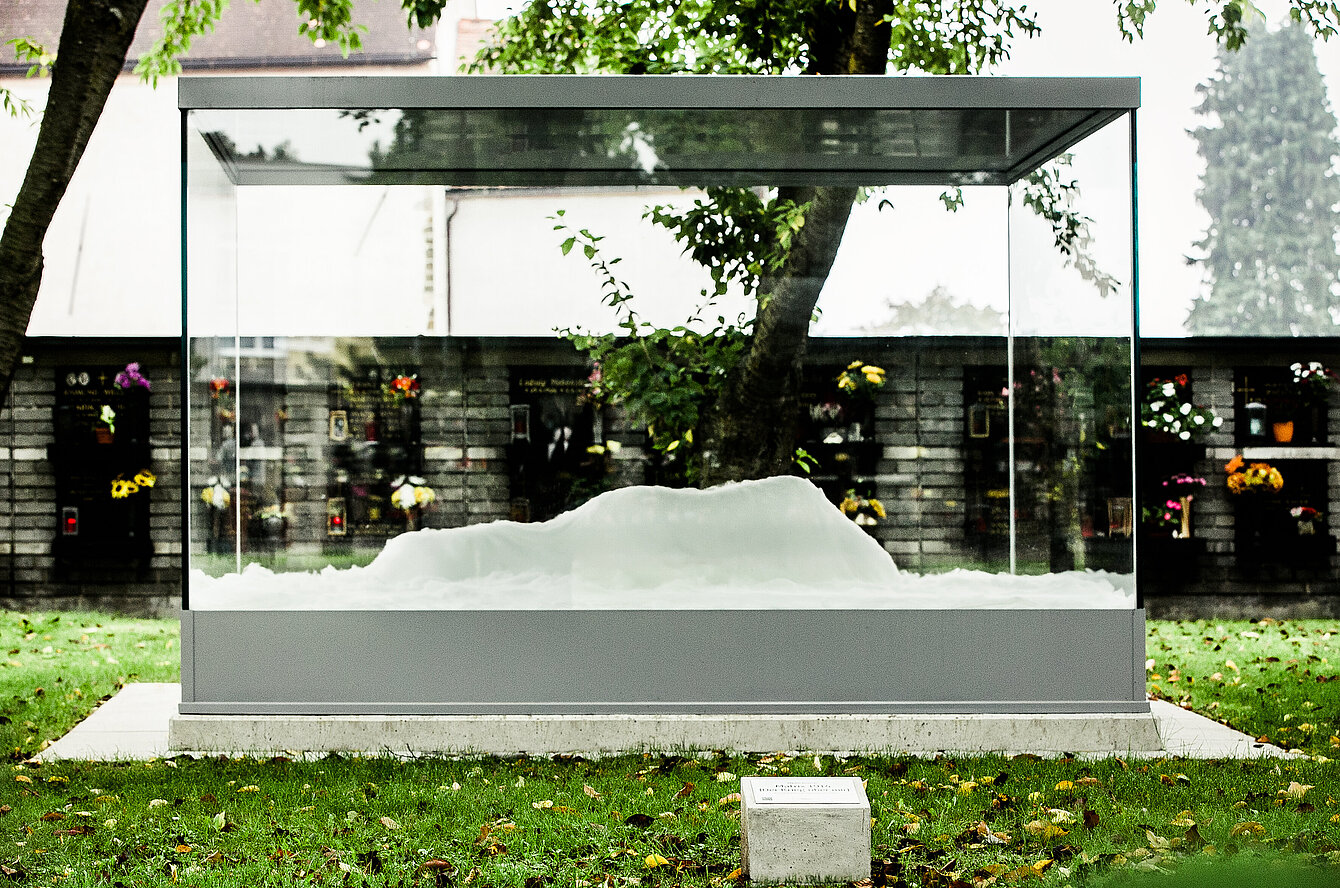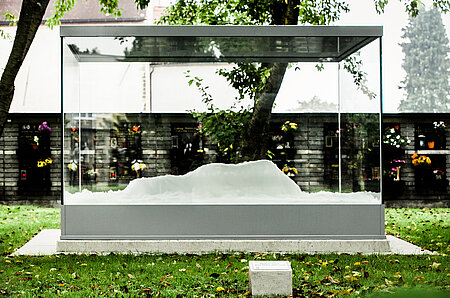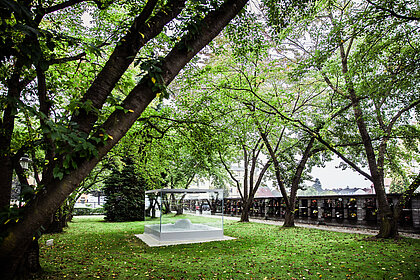In 1914, the First World War began as a result of a military conflict between Austria-Hungary and Serbia. After four years, around forty participating countries had to mourn seventeen million deaths on different continents and seas. Huge camp systems were set up for the countless prisoners of war, including one for around 30,000 in Knittelfeld, which had a population of 12,000. It was the largest POW camp in the Danube Monarchy. All traces of it were obliterated after the war. The aim was to counteract oblivescence by means of an artistic competition carried out by the Institute of Art in Public Space Styria[SL1] and to erect a memorial for it. The jury decided to implement Martin Gostner’s proposal. In a diorama reminiscent of historical forms of presentation, a limp, indeterminant victim, covered with cotton wool, can be made out. In allusion to the secondary use of the camp as a hospital, the material stands for medical care and healing — which is related to both the figure and the process in society.
Location:
Cemetery, 8720 Knittelfeld
47°12'44.6"N 14°49'06.5"E


























